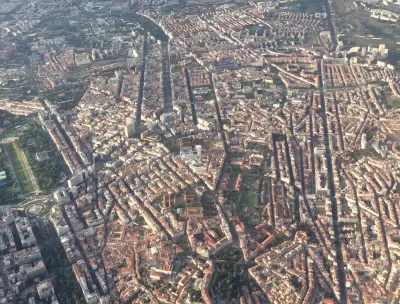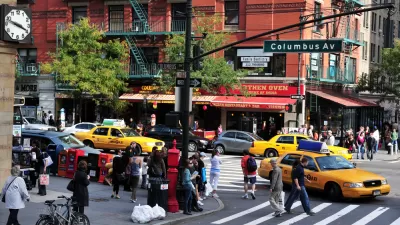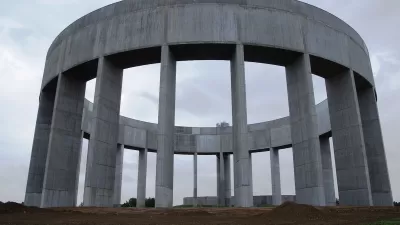Cities are not unlike brains in their capacity to evolve along complex, self-organizing patterns. Studying what some researchers call the "urban connectome" may give us insight into how best to organize the places where we live.

Urbanism and brain science are remarkably similar in some ways, Michael Mehaffy writes. "There is good reason to think that, as with brains, a lot of what happens in cities has more to do with the overall pattern of connections, and less to do with particular elements."
He goes on, "As Jane Jacobs pointed out over half a century ago, the city is a kind of 'intricate ballet' of people interacting, going about their plans, and shaping the life of the city, from the smallest scales to the largest." City folks thrive on knowledge spillovers, casual interactions with new people that give rise to novel enterprises and economic activity.
According to such a model, the health of cities depends on how effectively these kinds of "neural pathways" can form and reform. "In the case of cities, we have to ensure that we have well-connected, walkable cities, facilitating many cross-connections," Mehaffy writes.
The digital infrastructure of so-called smart cities can enhance such a network, but physical interactions between city dwellers form its foundation. "A corollary is that in our automobile-connected suburbs, it seems we have been replicating this pattern of connections—but only with heavy and unsustainable inputs of resources," Mehaffy says.
To get the most out of an urban connectome model, he goes on, we need to examine "the most effective patterns from a range of cities around the world—and over centuries of evolution."
FULL STORY: Wonders of the ‘urban connectome’

Alabama: Trump Terminates Settlements for Black Communities Harmed By Raw Sewage
Trump deemed the landmark civil rights agreement “illegal DEI and environmental justice policy.”

Planetizen Federal Action Tracker
A weekly monitor of how Trump’s orders and actions are impacting planners and planning in America.

The 120 Year Old Tiny Home Villages That Sheltered San Francisco’s Earthquake Refugees
More than a century ago, San Francisco mobilized to house thousands of residents displaced by the 1906 earthquake. Could their strategy offer a model for the present?

In Both Crashes and Crime, Public Transportation is Far Safer than Driving
Contrary to popular assumptions, public transportation has far lower crash and crime rates than automobile travel. For safer communities, improve and encourage transit travel.

Report: Zoning Reforms Should Complement Nashville’s Ambitious Transit Plan
Without reform, restrictive zoning codes will limit the impact of the city’s planned transit expansion and could exclude some of the residents who depend on transit the most.

Judge Orders Release of Frozen IRA, IIJA Funding
The decision is a victory for environmental groups who charged that freezing funds for critical infrastructure and disaster response programs caused “real and irreparable harm” to communities.
Urban Design for Planners 1: Software Tools
This six-course series explores essential urban design concepts using open source software and equips planners with the tools they need to participate fully in the urban design process.
Planning for Universal Design
Learn the tools for implementing Universal Design in planning regulations.
Clanton & Associates, Inc.
Jessamine County Fiscal Court
Institute for Housing and Urban Development Studies (IHS)
City of Grandview
Harvard GSD Executive Education
Toledo-Lucas County Plan Commissions
Salt Lake City
NYU Wagner Graduate School of Public Service




























